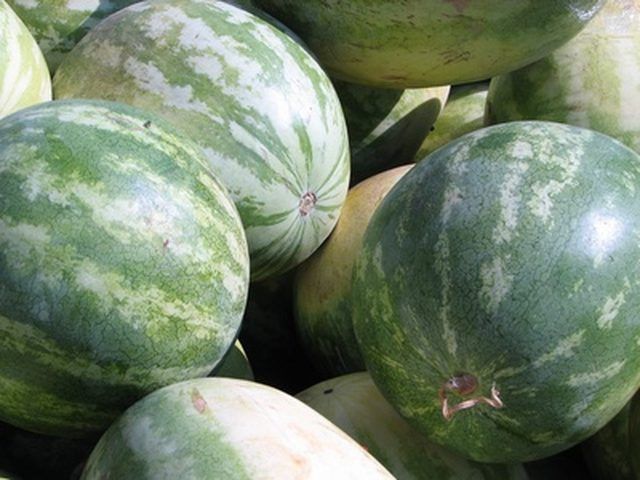Bulbs
Flower Basics
Flower Beds & Specialty Gardens
Flower Garden
Garden Furniture
Garden Gnomes
Garden Seeds
Garden Sheds
Garden Statues
Garden Tools & Supplies
Gardening Basics
Green & Organic
Groundcovers & Vines
Growing Annuals
Growing Basil
Growing Beans
Growing Berries
Growing Blueberries
Growing Cactus
Growing Corn
Growing Cotton
Growing Edibles
Growing Flowers
Growing Garlic
Growing Grapes
Growing Grass
Growing Herbs
Growing Jasmine
Growing Mint
Growing Mushrooms
Orchids
Growing Peanuts
Growing Perennials
Growing Plants
Growing Rosemary
Growing Roses
Growing Strawberries
Growing Sunflowers
Growing Thyme
Growing Tomatoes
Growing Tulips
Growing Vegetables
Herb Basics
Herb Garden
Indoor Growing
Landscaping Basics
Landscaping Patios
Landscaping Plants
Landscaping Shrubs
Landscaping Trees
Landscaping Walks & Pathways
Lawn Basics
Lawn Maintenance
Lawn Mowers
Lawn Ornaments
Lawn Planting
Lawn Tools
Outdoor Growing
Overall Landscape Planning
Pests, Weeds & Problems
Plant Basics
Rock Garden
Rose Garden
Shrubs
Soil
Specialty Gardens
Trees
Vegetable Garden
Yard Maintenance
How to Grow Ice Box Watermelons
How to Grow Ice Box Watermelons. Globe-shaped "ice box" watermelons mature to a space-saving size of about 10 to 15 pounds, perfect for today's smaller family size. Brought to the Americas by early traders and first cultivated in Massachusetts in 1629, watermelons are now almost more American than apple pie. They are fat-free, packed with nutrients...

Globe-shaped "ice box" watermelons mature to a space-saving size of about 10 to 15 pounds, perfect for today's smaller family size. Brought to the Americas by early traders and first cultivated in Massachusetts in 1629, watermelons are now almost more American than apple pie. They are fat-free, packed with nutrients and should be included in everyone's summer gardens--and now can be, given that most ice box varieties feature shorter growing seasons that work even in northern climates.
Things You'll Need
Watermelon seed, for ice box varieties
Peat pots and potting soil (optional)
Garden tiller
Rich compost
Well-rotted manure
Garden shovel
Trowel
Garden gloves
All purpose fertilizer, regular or organic
Straw or black plastic mulch
Long-handled hoe
Choose a planting area that will be sunny and warm throughout the summer growing season. Prepare your soil as soon as the ground can be worked in the spring, tilling deeply. Dig in compost and well-rotted manure. Watermelons do best in rich, well-drained sandy loams. Improve clay soils by adding large amounts of organic matter and sand.
Plant after all danger of frost is past and when soil is at 65 degrees F at least 4 inches down. Plant seeds about 1 inch deep in hills--loose circles--of eight or more seeds, spacing hills about 6 feet apart. Commercial growers space individual plants 2 or 3 feet apart in rows spaced 5 or 6 feet apart. Water thoroughly. Note the exact day seedlings first emerge, which begins your initial "days to maturity" count for at least early melons. Each variety has as an estimated number of days to maturity that's printed on the seed packet.
Thin to the strongest three or four plants per hill after seedlings emerge. Mulch the surrounding area with thick straw to discourage weeds, conserve soil moisture and protect developing melons from direct contact with wet soil. Some people prefer black plastic as temporary mulch, one that helps warm soil.
Water deeply and well, at least in areas of the country where summer rains don't do the job. Watermelons are mostly water and require a lot of it. Avoid overhead sprinklers, but if they are unavoidable, water first thing in the morning so plants can dry out, an important step in preventing disease. Hand water and soak deeply--dig a deep irrigation moat surrounding your melon hill and fill as needed--or use drip irrigation.
Weed as needed, pulling out unwanted vegetation by hand or cutting it down with hoes. Note the dates that melons are first seen.
Harvest melons when they are fully ripe--after the full "days to maturity" count has passed for your earliest melons. Examine the tendril closest to a given watermelon. When it turns brown, that melon is usually ripe, according to Victory Seeds. Another sign of ripening is that the melon's "ground spot"--where it touches the ground--will usually change color slightly at ripening, changing from pale green or white to yellow or cream, according to Cherry Gal Heirloom Seeds.
Tips & Warnings
If you have a short growing season, start your ice box watermelons indoors in peat pots about four to six weeks before you want to plant outside. Watermelons don't transplant well, but peat-pot starts can be popped right into warm ground.
Grow watermelons vertically by providing sturdy trellis supports and homemade fabric or mesh "slings" tied to the trellis for each developing melon, whose weight would otherwise separate fruit from vine before maturity.
Welcome honeybees and other pollinators, because each watermelon plant features both male and female flowers. Bees are needed to fertilize the female flowers for fruit set.
Don't worry if your watermelons' earliest flowers produce no fruit. The early flowers are the male flowers.